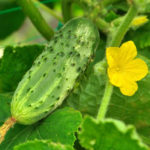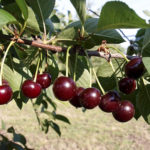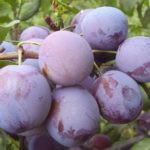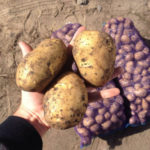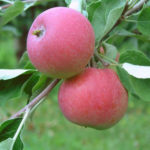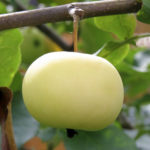Planting and growing apricots in the middle lane
Who said that the climatic conditions of the middle lane are not suitable for apricots? - the rich experience of amateur gardeners suggests the opposite! It is known for certain that, for example, more than 40 varieties of apricot are successfully grown on the territory of Russia, including in the middle lane.

Features of culture
Apricot comes from regions with a warm climate (for example, Central Asia, the Caucasus, China, Iran), so the culture has its own characteristics.
Firstly, frosts are not so critical for apricots during the winter dormancy (with good maturation, trees can withstand up to -30 ° C), as sharp temperature fluctuations, when thaws are replaced by a significant decrease in ambient temperature. In such conditions, the death of flower buds often occurs.
Secondly, the apricot is distinguished by a short dormant period and very early flowering (already at a temperature of 6-8 ° C), and return frosts often lead to loss of yield (death of flower buds). By the way, from time to time this is observed in the southern regions.
Thirdly, the bark of young apricot trees is very sensitive to sunburn - this is observed in early spring.
The fourth factor that inhibits the spread of apricot in regions with an atypical climate is a rather long growing season. Not lignified shoots in a relatively cool and short summer do not have time to accumulate a sufficient amount of plastic substances and prepare for winter, and as a result they freeze out (and flower buds are laid on them).

Selecting and preparing a site for planting apricots
For apricot, slightly acidic (pH 6-7) fertile soils are preferred, sufficiently supplied with phosphorus and potassium salts. An excess of nitrogen for the apricot is undesirable, since in this case the growth of stepchildren is activated to the detriment of fruiting, the plants "fatten" and do not have time to prepare for winter.
Particular attention should be paid to the mechanical composition of the soil - it must be well structured, moisture and air permeable (sandy loam, loam). Salt marshes and floating soils, as well as areas where the groundwater level is less than 2 meters, are unsuitable for apricot.
For apricots, the most suitable places are located on the south side in the upper third of gentle slopes, protected from cold northern and eastern air masses.
Preparation for planting begins with deep digging (up to 45 cm) of the soil with the simultaneous introduction of humus (3-4 kg per 1 m2) and fertilizer mixtures. Mineral fertilizers are set depending on the type of soil and on the basis of laboratory analysis data. For example, clay soils are often poor in phosphorus, therefore, superphosphate is required (100-150 g per m2). On sandy loam soils, there is a significant leaching of potassium, therefore, up to 300 g of potash fertilizers are applied for digging for 1 m².
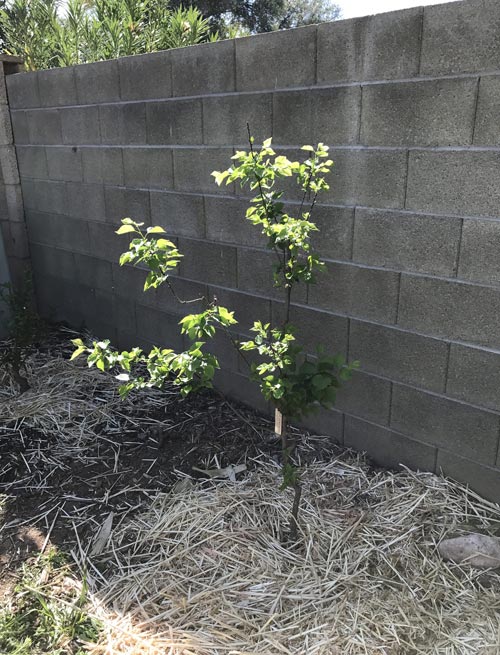
Methods for obtaining planting material
Currently, there are several ways to propagate apricot:
- growing from seeds;
- rooted cuttings;
- vaccination (budding and copulation).
Reproduction by cuttings is a rather dubious and ineffective way, therefore it makes no sense to consider it.
Growing from seeds. This method is usually practiced for the purpose of obtaining a viable rootstock, as well as in breeding work. Apricots grown from pits are distinguished by good survival rate and high frost resistance. Plants grown from seeds obtained from wild apricots - poles are distinguished by the greatest vitality.For seeds (pits) of apricot, stratification is required within 3-4 months. Artificial stratification is carried out with alternating positive (+ 5−10 ° C) and negative (about -5 ° C) temperatures. Many gardeners prefer a natural rhythm, planting seeds in the fall - most (about 80-90%) of them hatch in the spring. This method is the least labor intensive and does not require special hardware. For budding, the seedlings are grown for 1 year so that the diameter of the rootstock stem increases to at least 1 cm. To carry out copulation, a stem diameter of 2 cm is required, which requires growing seedlings for at least 2 years.
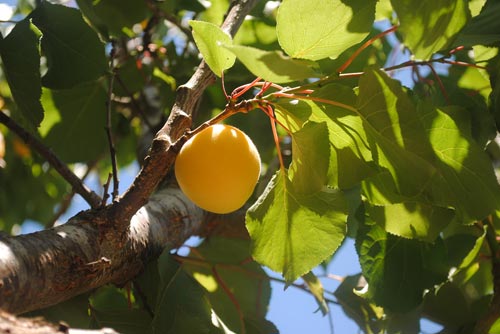
Graft. This method is the most popular and highly effective. Vaccinations are carried out not only on the rootstock obtained from seedlings, but also on plum and cherry plum - close relatives of apricot. The best time for grafting using the copulation method and for the bark is the beginning of May, and budding is carried out in the summer. The description of the vaccination technique is not considered in the context of this article.
Planting apricot and planting care
It is advisable to plant an apricot in the spring, then by the fall the plants will get strong enough and have time to prepare for winter. Immediately before planting, planting pits are dug (about 60-70 cm deep), into which 7-10 kg of humus and superphosphate (800-1000 g) are introduced.
After planting, care comes down to timely watering, organomineral feeding, disease prevention and pest control. At the initial stage, it is equally important to prepare young plantings for wintering, as well as crown formation.
The apricot is quite drought-resistant, therefore, during the growing season, three times of watering is more than enough: in mid-April, at the end of May and a few weeks before fruiting.
When preparing trees for wintering, if the autumn is dry, additional watering is required. In order to protect against frost, the trunks are insulated with burlap, corrugated cardboard or other materials. It is advisable to mulch the near-trunk zone with sawdust, spruce branches, and in winter - to cover it with snow. For undersized seedlings, it is recommended to equip a film shelter.
Fertilizing and feeding apricot
Organomineral feeding of apricot is carried out annually, in the spring. At first, the fertilizer mixture is embedded in the near-stem zone, and as the crown grows, the area is increased.
As a rule, the first fruits begin to set as early as 3-4 years after planting, but the apricot reaches its highest productivity at the age of 5-6 years. Obviously, from year to year trees need more and more doses of mineral fertilizers. So, for example, in the first 2-3 years, 120-130 g of superphosphate, 40 g of potassium salts and 60 g of nitrogen fertilizers must be added under each tree. By 4-5 years, the dosage is increased: up to 200 g of superphosphate, 60 g of potassium chloride and about 100-120 g of nitrogen fertilizers. Subsequently, saltpeter is added up to 300 g or more, potassium salts - 150-250 g and up to 1 kg of superphosphate.
Secrets of increasing the lifespan of an apricot
Apricots age much earlier than other crops, but with proper care, the life of the plantings can be extended to 25 years or more. One of the most important activities in this is the summer (in the first and second decades of June) rejuvenating pruning, as a result of which the growth of new shoots is activated. The pruning technique proposed by Professor Shitt can significantly increase the resistance of apricots to adverse conditions and increase winter hardiness, and as a result, yield. Shitt's technique provides for the removal of the tops of young shoots by a third - flower buds are laid on the newly formed growths, which are characterized by higher winter hardiness.
